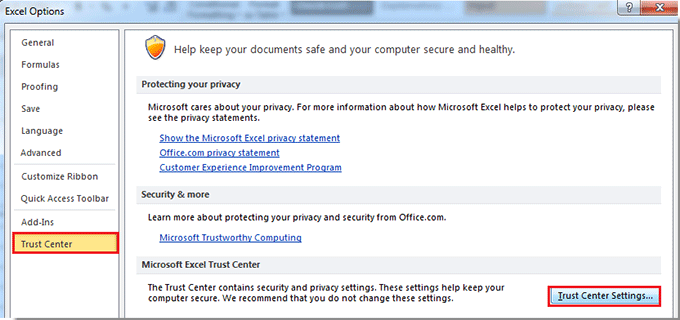

Note: If the add-in is enabled in RUNNER but does not appear in Excel, an error may have occurred during installation that prevented the add-in from installing correctly.Click the Office button, and then click Excel Options. Then, in the right side panel click the GO button beside “Manage Excel Add-ins” Why Add-Ins not showing in Excel? Open Excel and do the following: Excel 2010-2021: Click the green File ribbon tab, Options, Add-ins. How do I show the Add-Ins tab in Excel 2010?

To make the Developer tab appear in the ribbon of certain Microsoft Office 2010 applications, follow these steps: Microsoft has confirmed that this is a problem in the Microsoft products that are listed in the "Applies to" section. In the Export Registry File dialog box, select the file that you just saved, and then click Open. In Registry Editor, click Import on the File menu. Then, change this string to the following: Make sure that the Selected branch option is enabled, and then click Save. In the Export Registry File dialog box, select a path and a name for the exported file. HKEY_CURRENT_USER\Software\Microsoft\VBA\6.0\Common
DISABLE MACROS IN EXCEL 2010 REGISTRY HOW TO
For more information about how to back up and restore the registry, see How to back up and restore the registry in Windows.Ĭlick Start, click Run, type regedit, and then click OK. Then, you can restore the registry if a problem occurs. For added protection, back up the registry before you modify it. Therefore, make sure that you follow these steps carefully. However, serious problems might occur if you modify the registry incorrectly. This section, method, or task contains steps that tell you how to modify the registry. In the Options dialog box, select any option that you want to enable, and then click OK. If you start Microsoft Access 2010, click Visual Basic on the Database Tools tab.

On the Developer tab, click Visual Basic. To do this, use one of the following methods: Method 1 To work around this problem, enable the settings manually. HKEY_CURRENT_USER\Software\Microsoft\VBA\6.0\Common Workaround In earlier versions of Office, the registry entries are located at the following subkey: HKEY_CURRENT_USER\Software\Microsoft\VBA\7.0\Common In Office 2010, the registry entries are located under the following subkey: Therefore, the registry entries that correspond to the settings for the Visual Basic editor are located under a different subkey. This problem occurs because Visual Basic for Applications (VBA) is upgraded to version 7.0 in Microsoft Office 2010. When you open the file in a Microsoft Office 2010 application, these settings are disabled. You notice that some settings for the Microsoft Visual Basic Editor are enabled in the application, such as the Require Variable Declaration option and the Compile on Demand option. You create a file in a 2007 Microsoft Office application or in an earlier version of the application. For more information about this change, read this blog post. Office 365 ProPlus is being renamed to Microsoft 365 Apps for enterprise.


 0 kommentar(er)
0 kommentar(er)
